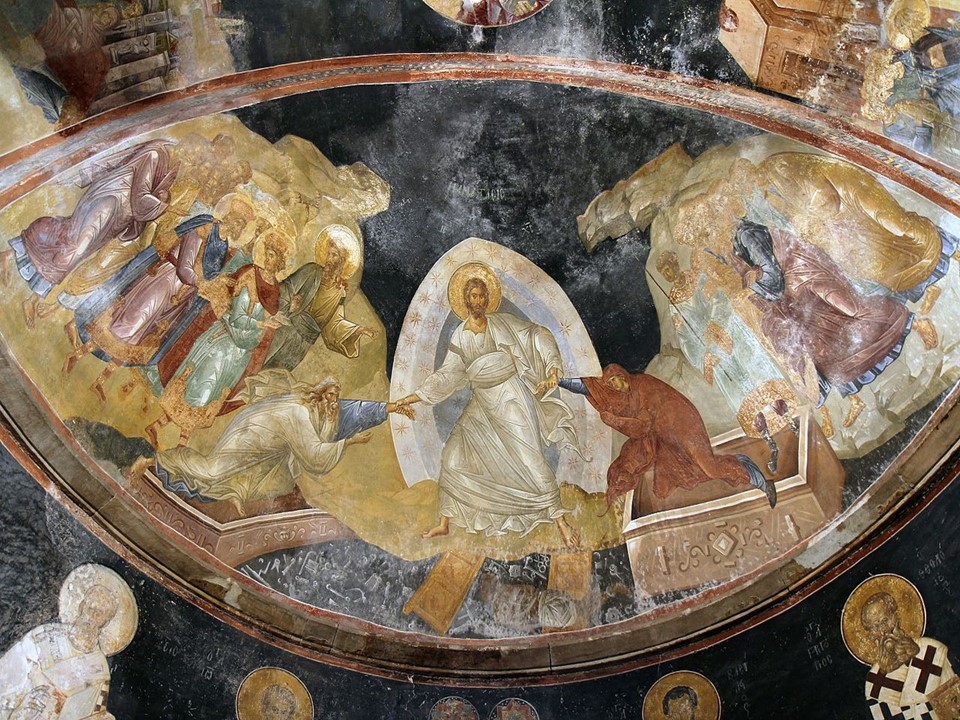
“For I delivered unto you first of all that which I also received, how that Christ died for our sins according to the Scriptures; and that He was buried, and that He rose again the third day according to the Scriptures; and that He was seen of Cephas, then of the twelve; after that, He was seen of above five thousand brethren at once.” 1 Cor. 15:3-6… Holy Week in the Greek Orthodox Church https://www.goarch.org/-/holy-week-in-the-eastern-orthodox-church
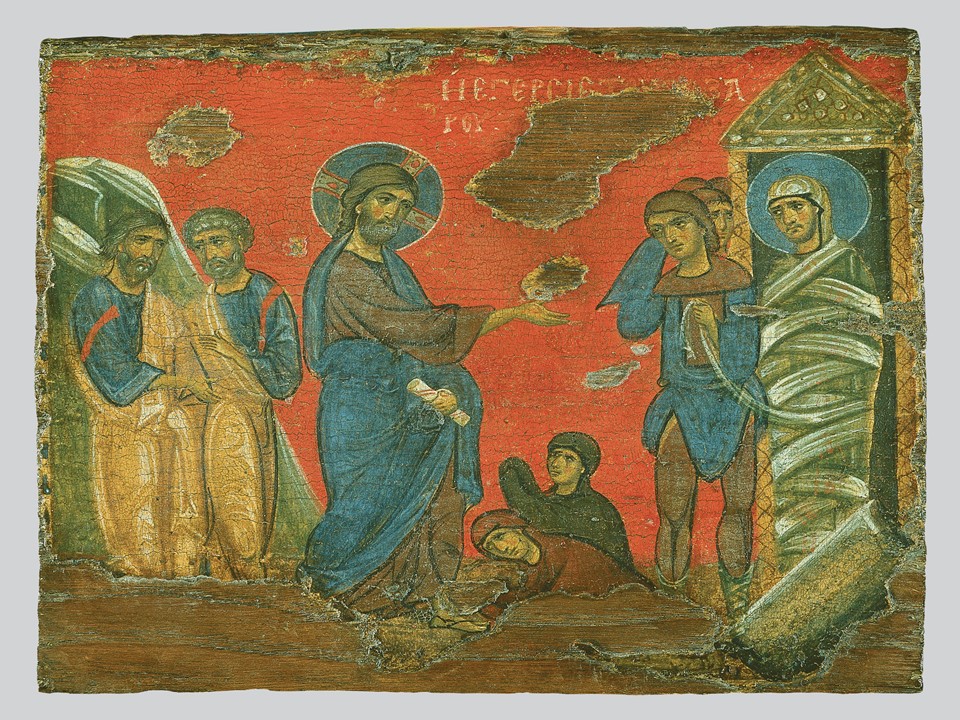
Lazarus Saturday… “Six days before the Passover, Jesus came to Bethany…” (John 12:1)
According to Pseudo-Dionysius the Areopagite, a Christian theologian and philosopher of the late 5th to early 6th century, colour RED is the colour of fire, flames, and Devine Energy… It is also the colour of blood, Christ’s blood to be more specific and thus the colour of Salvation for Mankind… https://plato.stanford.edu/entries/pseudo-dionysius-areopagite/
The Raising of Lazarus, in this amazing 12th century Icon from Mount Athos, takes place in front of a blazing Byzantine RED background… It is part of the Collection of the Byzantine and Christian Museum at Athens, a Museum that houses over 25,000 artefacts dating from the 3rd century AD to present time. The Byzantine and Christian Museum is housed in Villa Ilissia, one of the loveliest buildings erected in Athens during its early years as the capital of the newly-founded Greek state. Villa Ilissia, designed by the architect Stamatis Kleanthis, was the winter residence of Sophie de Marbois-Lebrun, Duchess of Plaisance, a formidable lady with a remarkable fortune! https://www.byzantinemuseum.gr/en/ and https://www.byzantinemuseum.gr/en/museum/villa_ilissia/
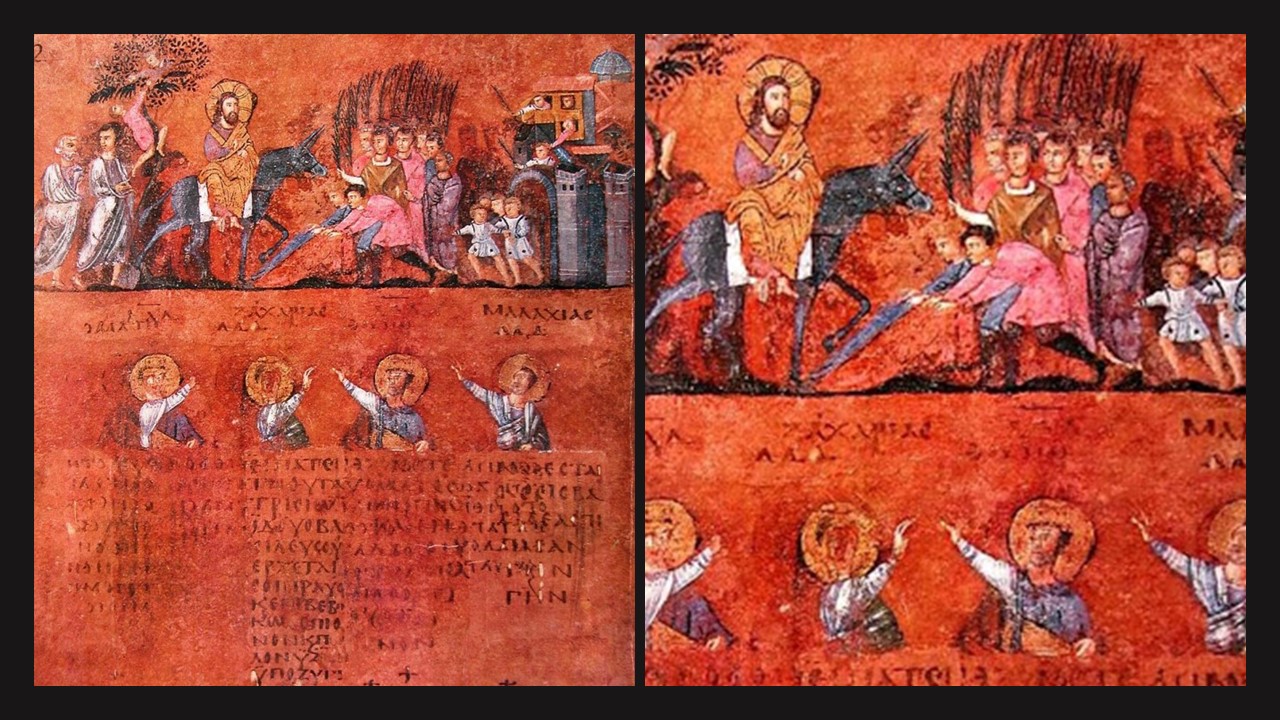
Palm Sunday… “Rejoice greatly…O daughter of Jerusalem; behold, the King comes unto Thee; he is just, and having salvation; lowly, and riding upon an ass, and upon a colt the foal of an ass.” (Zech. 9:9)
The Entry of the Lord into Jerusalem Manuscript Illumination in the 6th century Rossano Gospels is yet another blazing RED coloured Byzantine artwork. The fragmentary manuscript presents scenes from the Life of Christ, and sometimes small portraits of Old Testament prophets, prefiguring an event described in the New Testament. It contains the texts of Matthew and Mark written in fine silver and gold uncials on purple vellum. https://www.artesacrarossano.it/eng/codex.php
“The Rossano miniatures are painted with extraordinary refinement and economy. Like the illustrations in the Vienna Genesis, they distil the narrative action in a few convincing gestures. Hellenistic naturalism survives in the soft, highlighted garments, dramatic action, and details of the setting. Christ’s trial, for example, is depicted as an authentic court procedure. Nevertheless, a weakening of classical verisimilitude and vigour is evident throughout the manuscript; in the Mark page, the personification and garden wall appear flattened and show a tendency toward abstract pattern.” https://www.thebyzantinelegacy.com/rossano-gospels
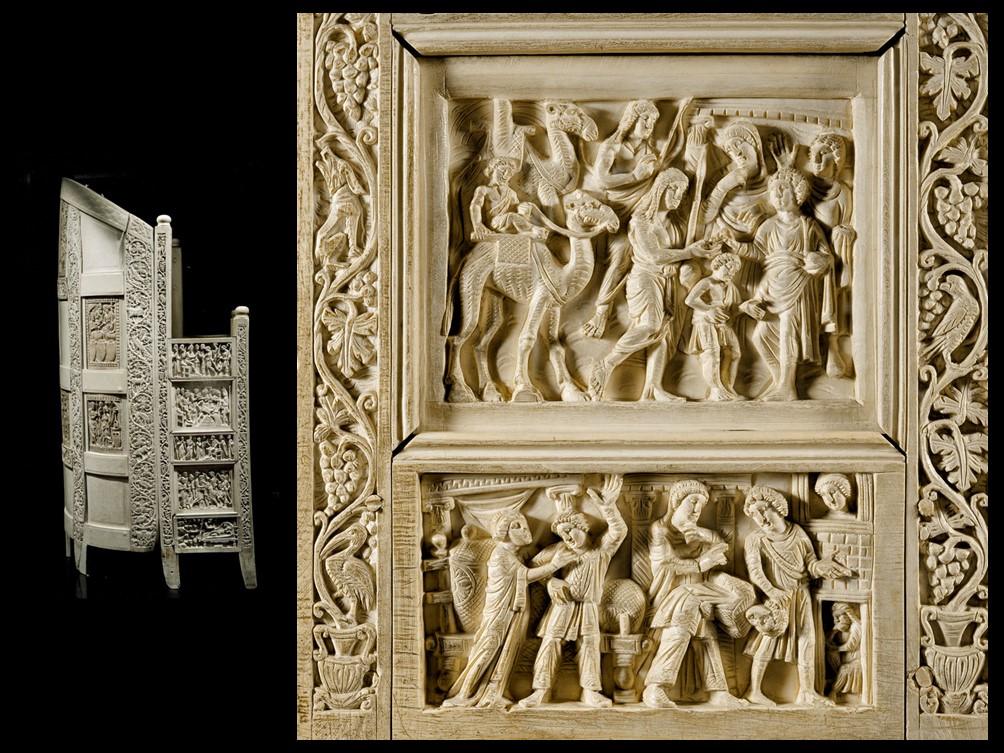
Great Monday… “May no fruit ever come from you again!” (Matt. 21:19)
Monday of Holy Week commemorates the blessed and noble Joseph and the fig tree which was cursed and withered by the Lord. The story of Joseph of the Old Testament (Genesis 37-41) serves as a great example of a virtuous man, a model of propriety and sincere observance of ethical principles. https://www.goarch.org/-/holy-week-in-the-eastern-orthodox-church
The Throne of Maximianus, in the Archiepiscopal Museum of Ravenna, is one of the greatest examples of 6th century Byzantine Art. The wooden core of this monumental Cattedra was covered with panels of ivory carvings wonderfully encased with strips of vine scrolls inhabited by birds and animals. Ivory panels decorating the back of the Throne show scenes from the Life of Christ, while the side panels depict scenes from the Story of Joseph from the Book of Genesis. The panels used in the front of the Throne depict the Four Evangelists left and right of John the Baptist, who is holding a medallion with the Lamb of God and Maximianus’s name above him. Scholars identify two different artists working on this amazing Early Byzantine masterpiece. The explanation can be simple… the Plague of Justinian probably caused the death of the first, maybe of Alexandrian origin, artist, so that a second artist was introduced to finish this amazing imperial commission. https://www.thebyzantinelegacy.com/maximian-throne
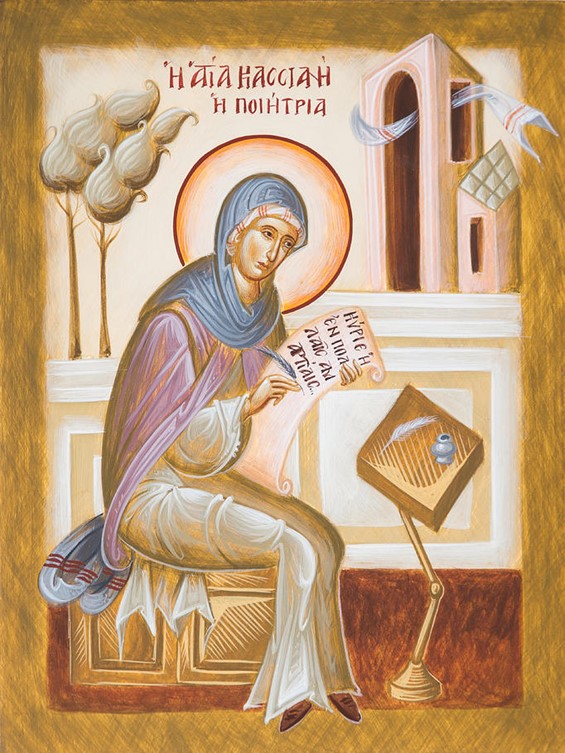
Great Tuesday… “Lord, she who has fallen in many sins, Recognizing Your Divinity, Took up the myrrh-bearer’s office, With tears brought you myrrh before your entombment.”
Every Great Tuesday Greek Churches are full of people waiting to hear the bittersweet hymn of Kassiani. Admired, popular and beloved, this hymn is universally acknowledged to be a masterpiece of religious poetry that possesses both beauty and richness of meaning. https://www.academia.edu/11959468/Kassia_A_female_hymnographer_of_9th_century_Byzantium_and_her_hymnographic_poem_on_the_Vesper_of_Holy_Tuesday
Κύριε, ἡ ἐν πολλαῖς ἁμαρτίαις περιπεσοῦσα γυνή… enjoy it as sang by Nektaria Karantzi https://www.youtube.com/watch?v=c4v2kVmoeB4
Kassiani, born in the early 9th century into a wealthy family of Constantinople, was to become a Byzantine abbess, poet, composer, and hymnographer, known to have written in her own name just like the Porphyrogenita Anna Comnene. https://www.johnsanidopoulos.com/2015/09/saint-kassiani-hymnographer.html
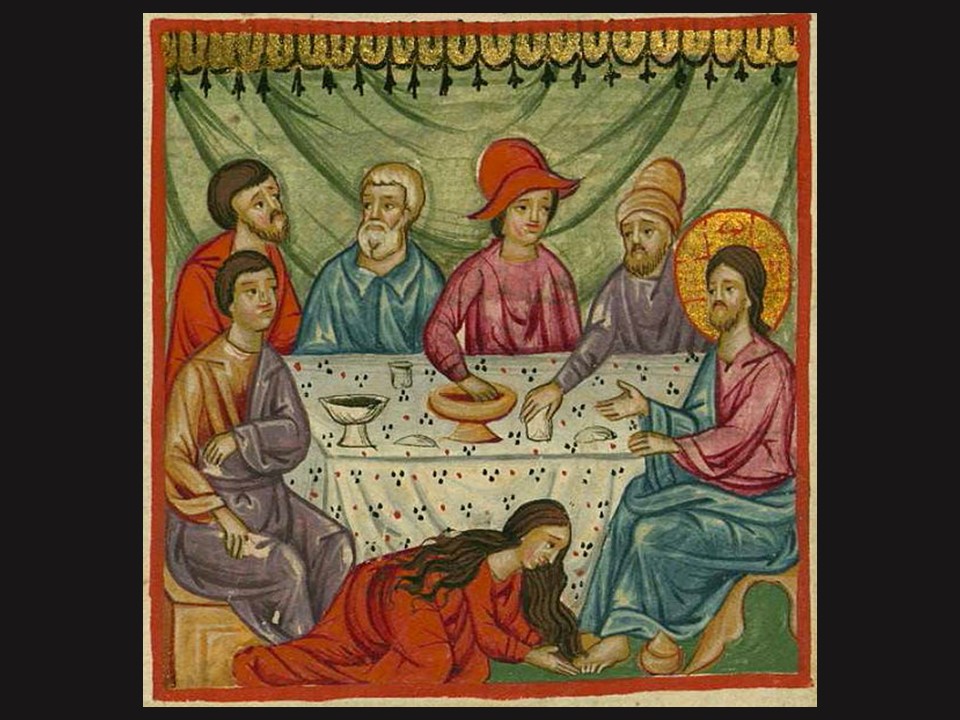
Great Wednesday… “Let no fear separate you from Me…” this is the evening of repentance, confession and the remission of sins by Christ, preparing the faithful to receive Holy Communion…
Walters manuscript W.592 is an illuminated and illustrated Arabic manuscript of the Gospels by Matthew (Mattá), Mark (Marqus), Luke (Luqa), and John (Yuhanna) and was copied in Egypt by Ilyas Basim Khuri Bazzi Rahib, who was most likely a Coptic monk, in Anno Mundi 7192/AD 1684. The text is written in Naskh in black ink with rubrics in red. The decoration is comprised of illuminated headpieces, numerous floral paintings, and approximately fifty illustrations. It is worth browsing through its pages… https://art.thewalters.org/detail/17922
The Walters Art Gallery Manuscript 592, is becoming one of my favourites… I enjoy the clarity of the compositions, the vibrancy of colours applied, the bold outlines and the pure joy of the floral decorative patterns used by the artist!
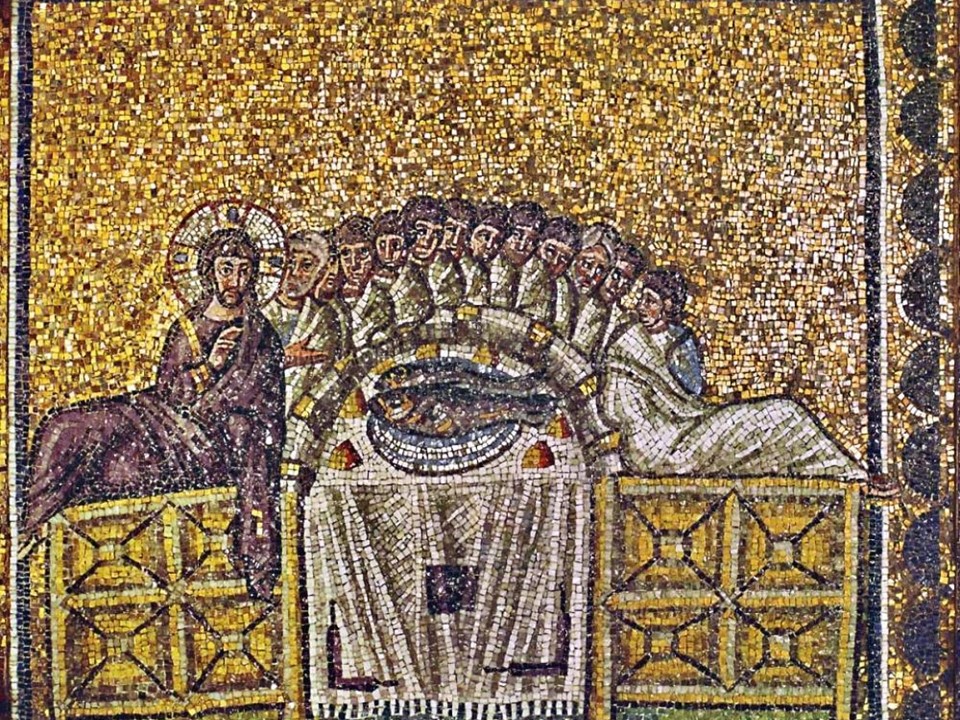
Great Thursday… “Take, eat; this is my Body. Drink of it all of you; for this is my Blood of the New Covenant” (Matthew 26:26-28)
Scenes of a Byzantine Mystical Supper, usually depict the event in a straight-forward manner, as described in the Gospels: the Twelve Disciples are seated around an oval table, John usually rests on Jesus’ bosom, and Judas dips his hand in the dish, revealing him to be Christ’s traitor. This is not the case in the 6th century Church of Sant’Apollinare Nuovo in Ravenna. Chris, dressed in purple, along with the 12 Disciples dressed in white, recline around a central table. The bread and fish on the table may refer to the miracle of the loaves and fishes portrayed on the opposite wall of the Church while the Bread explicitly relates that miracle to the Eucharist, which Jesus is believed to have instituted at the Last Supper. This is one of the 13 mosaics of the Passion and Resurrection of Christ along with the upper band of the right wall of the nave. https://www.christianiconography.info/Edited%20in%202013/Italy/sApolNuovoRightNave.lastSupper.html
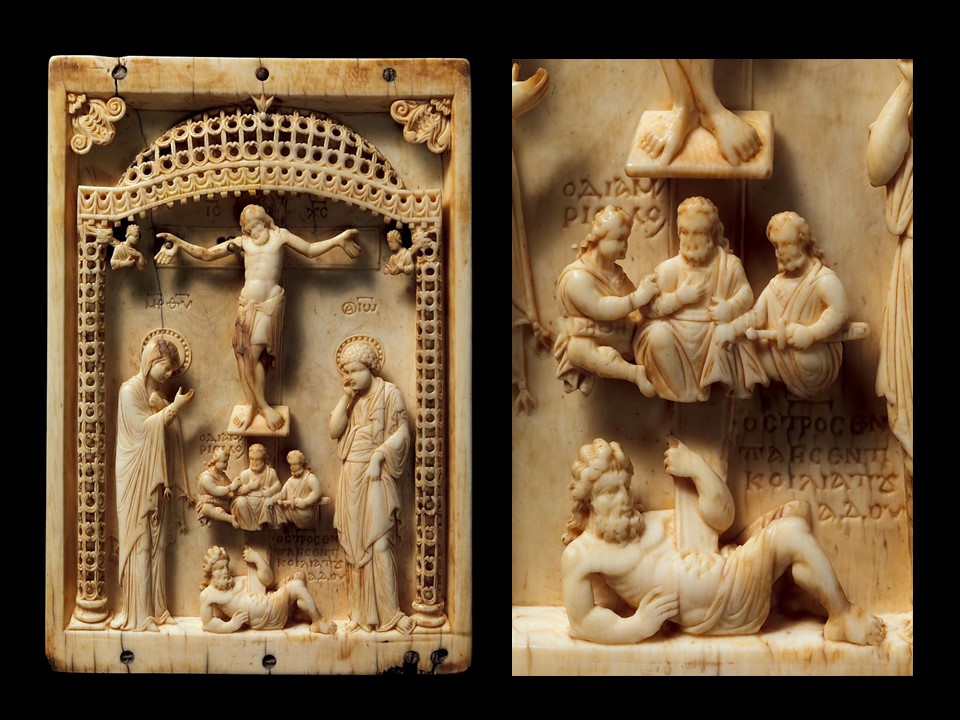
Great Friday… Oh my sweet spring, my sweetest child, where does your beauty fade? (Excerpt from the Lamentations of Good Friday)
The Metropolitan Museum of Art has among its many Byzantine Treasures, an Ivory Icon of the Crucifixion I particularly like. It is small in size like all Byzantine Ivory panels, but so rich in quality work… Under a richly textured canopy, the MET Crucifixion emphasizes Christ’s victory over death. Christ’s body lifelessly “suspends” on the Cross while his head gracefully falls forward and leans to his left shoulder. Mary and John stand on the sides of the Cross mourning with dignity, the three soldiers divide Christ’s garment, and at the very bottom, unique to this small ivory piece, the personification of Hades! Panofsky’s Renascence at its best! https://www.metmuseum.org/art/collection/search/464428
Ω γλυκύ μου έαρ… Enjoy one of the most moving Byzantine Hymns, sung by no other than Flery Dandonaki https://www.youtube.com/watch?v=jUJwTe5QC7I
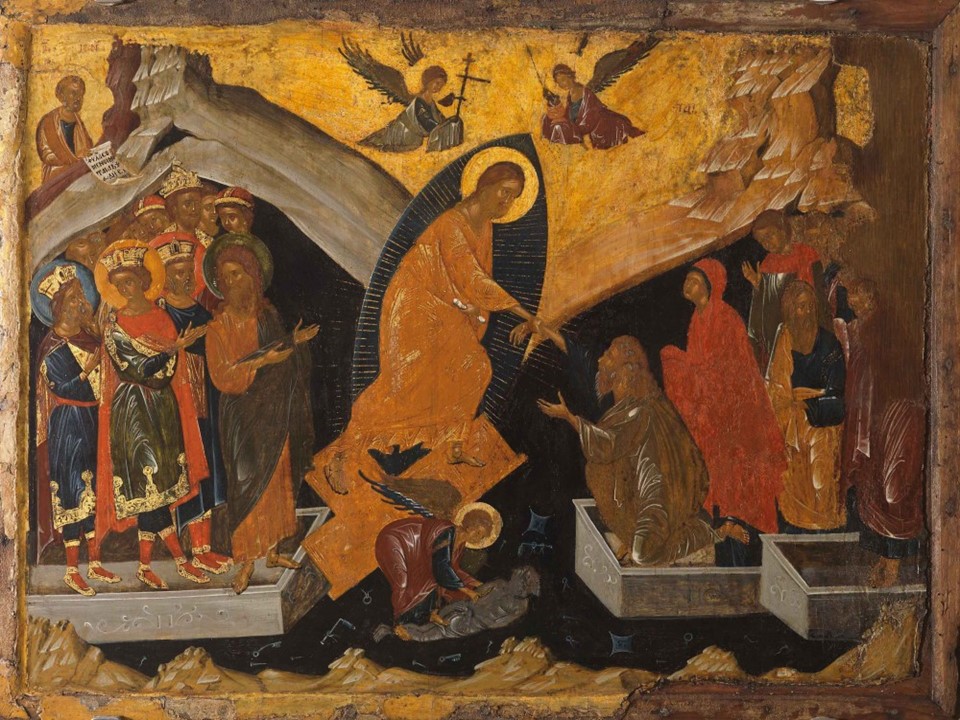
Great Saturday… “Arise, O God, and judge Thou the earth…” (Vespers and Divine Liturgy of Saturday evening)
This amazing Icon at the Hellenic Institute in Venice comes from Constantinople and dates from the late 14th century. It is elegant and sophisticated, a fine example of the Late Paleologean style in painting. It depicts the Resurrection of Christ, or in true Byzantine style, the Descent of Christ into Hades, according to the occult gospel of Nicodemus. Christ is depicted in the center of the composition, within a radiant glory, stepping at the gates of Hades and lifting Adam from within an open sarcophagus. Behind Adam are Eve, the prophets and on the opposite side Biblical kings like Solomon, David, and prophets from the Old Testament. In the lower central part, an angel chains Hades, while at the top, against a glorious golden background, two angels fly, holding the symbols of Christ’s Passion… http://eib.xanthi.ilsp.gr/gr/icons.asp
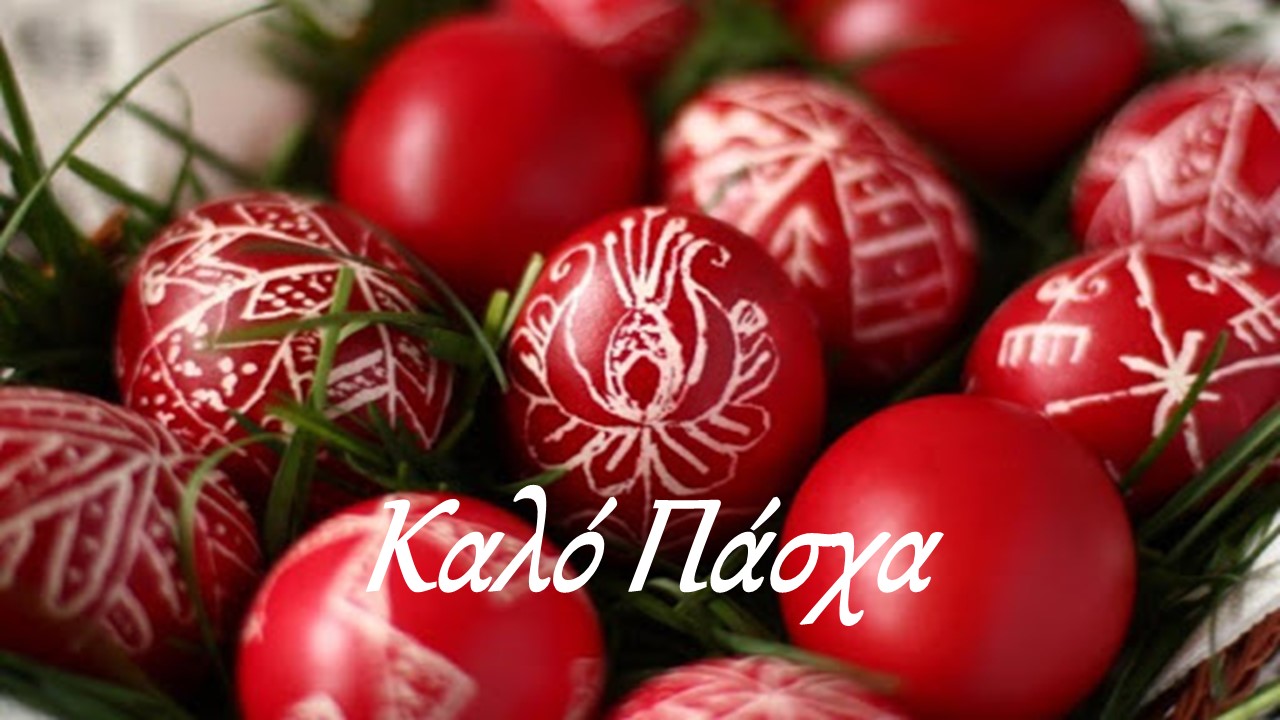
For a PowerPoint on The Holy Week in the Greek Orthodox Church, please… click HERE!